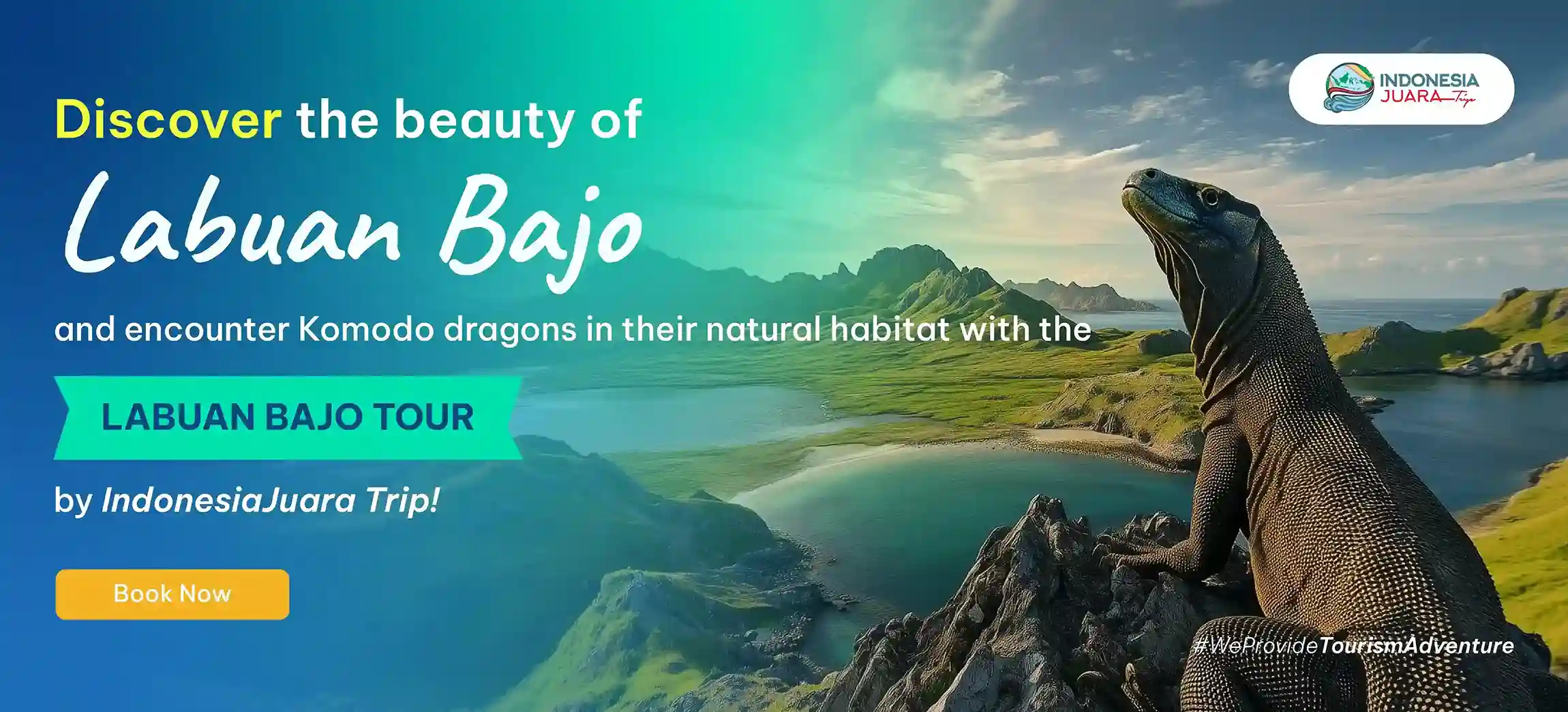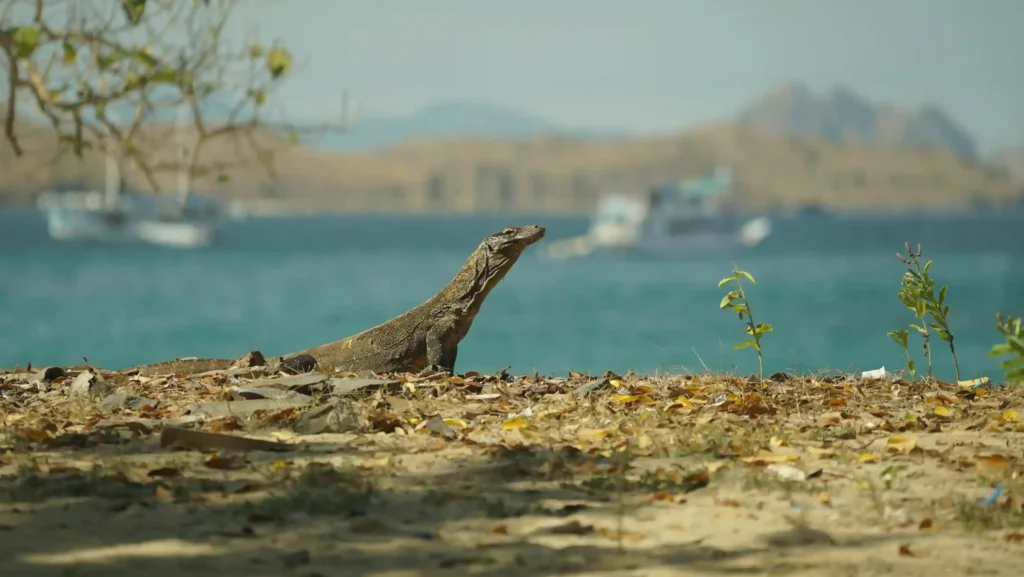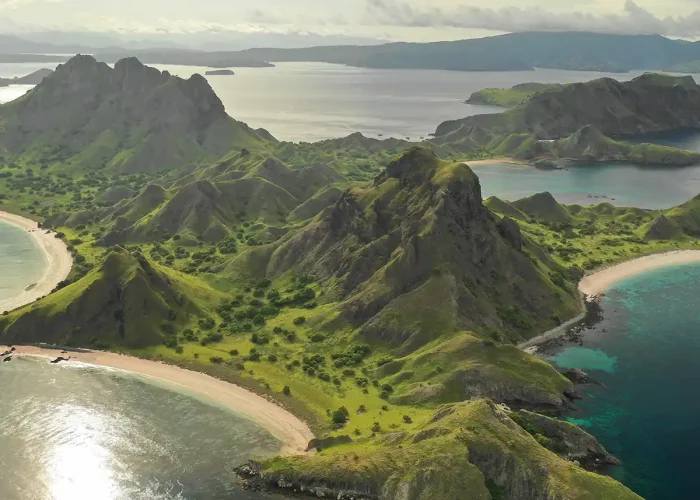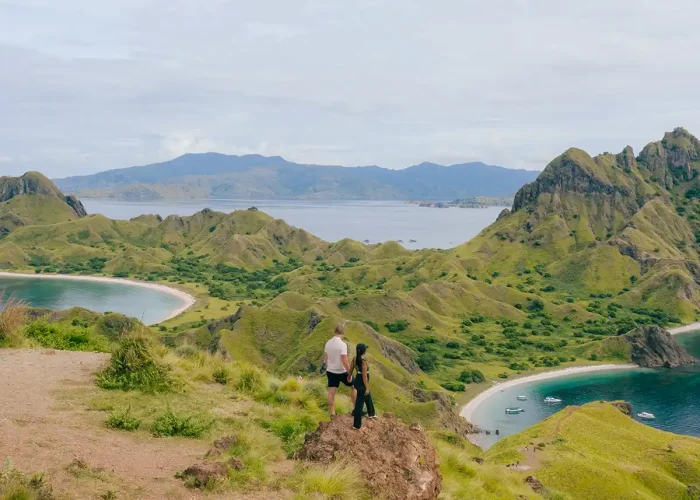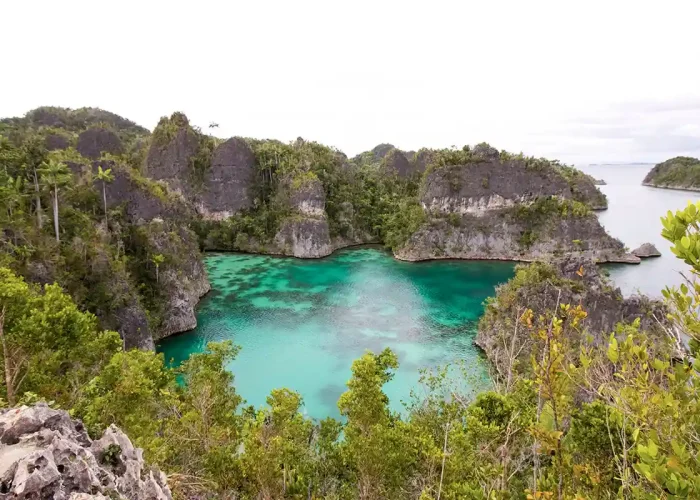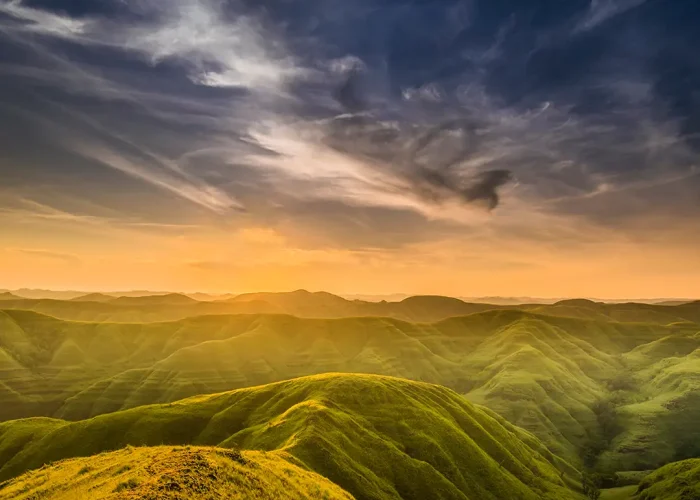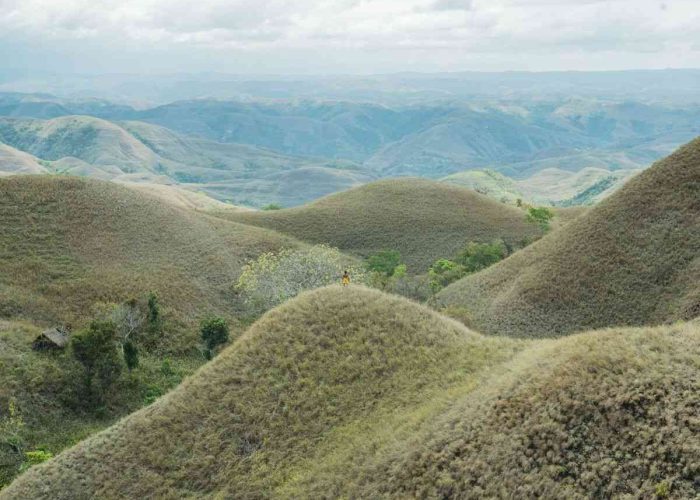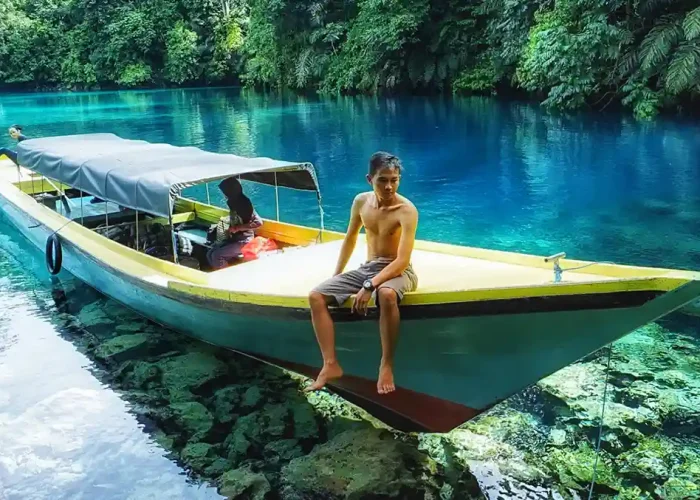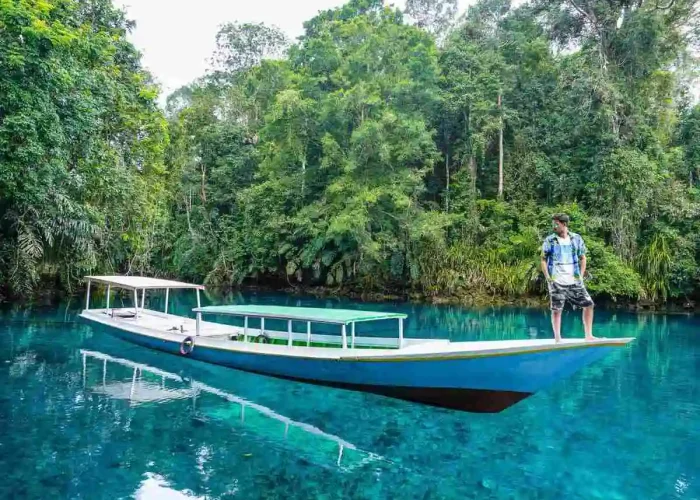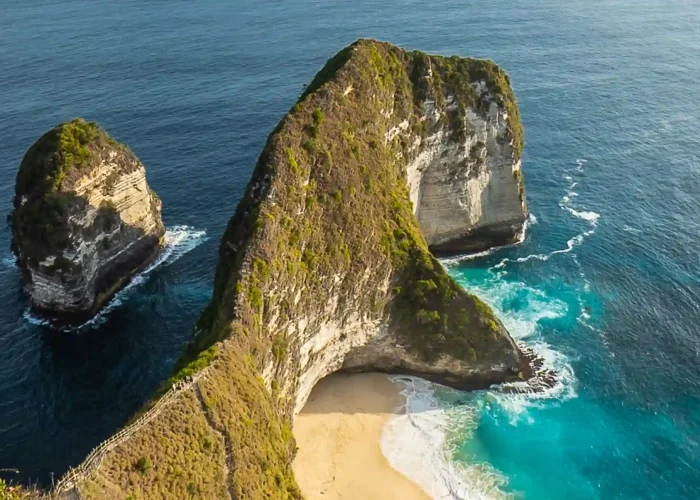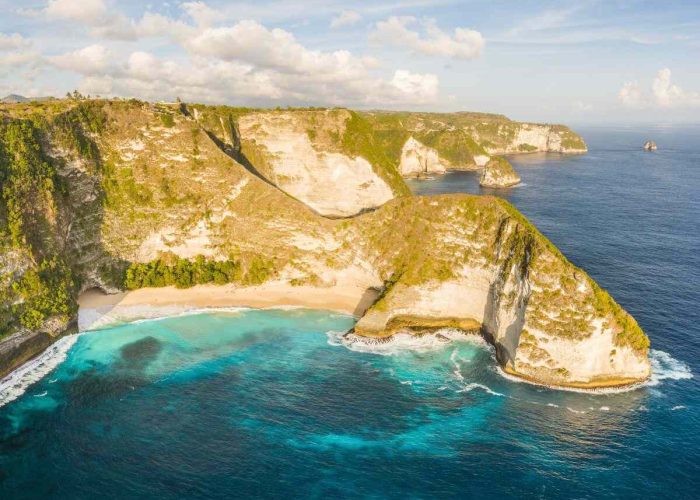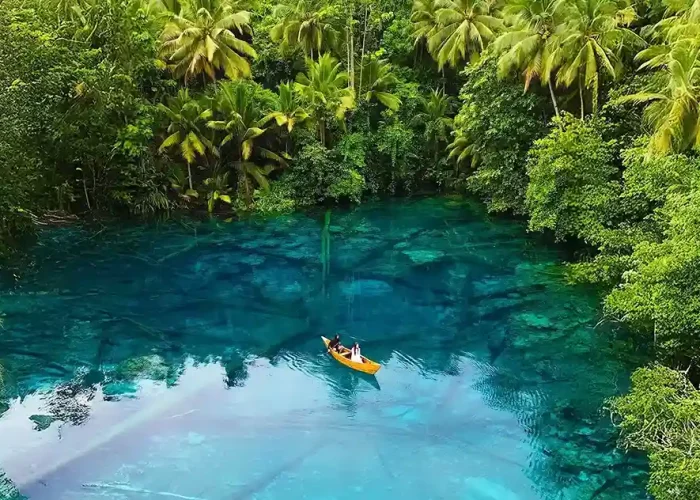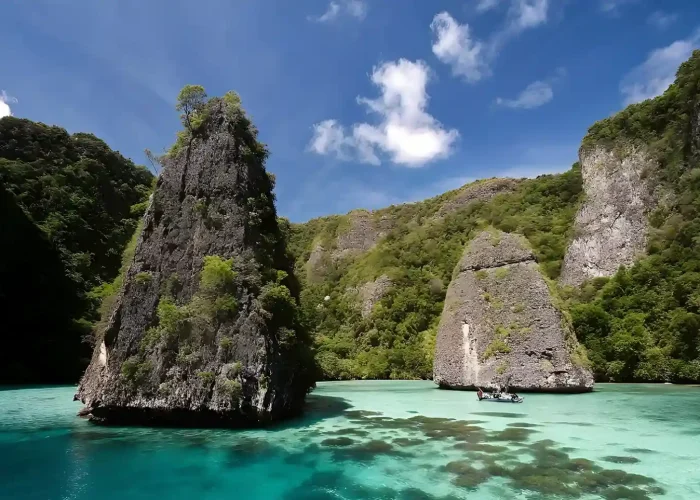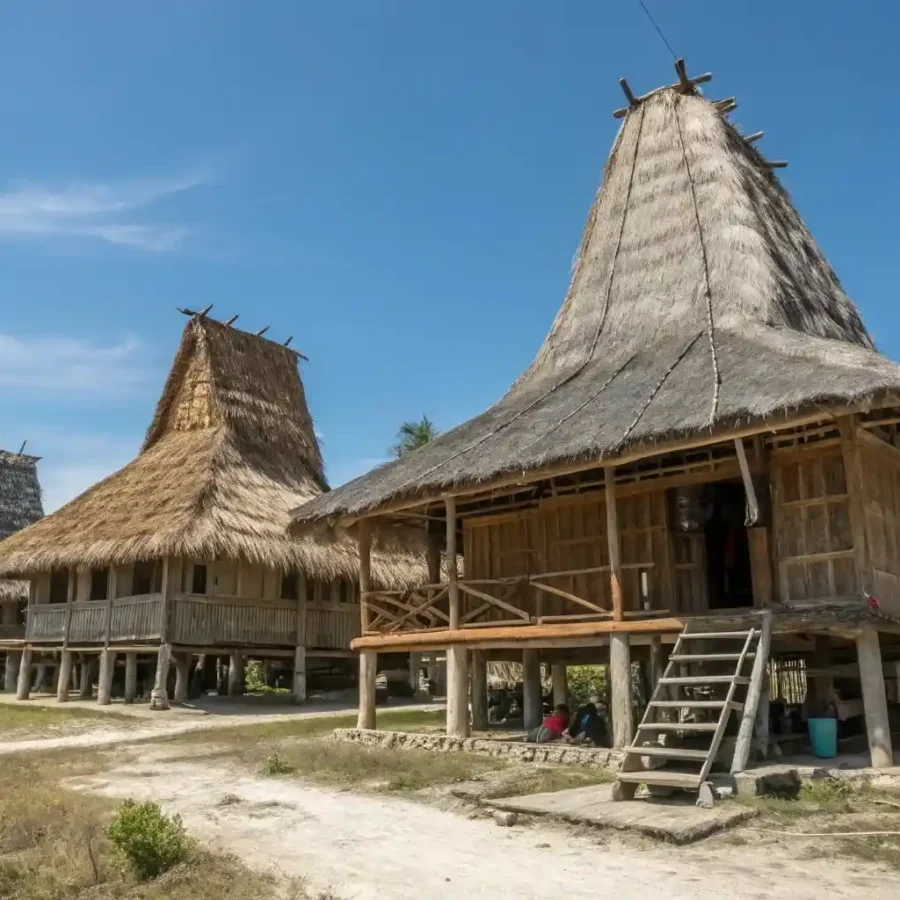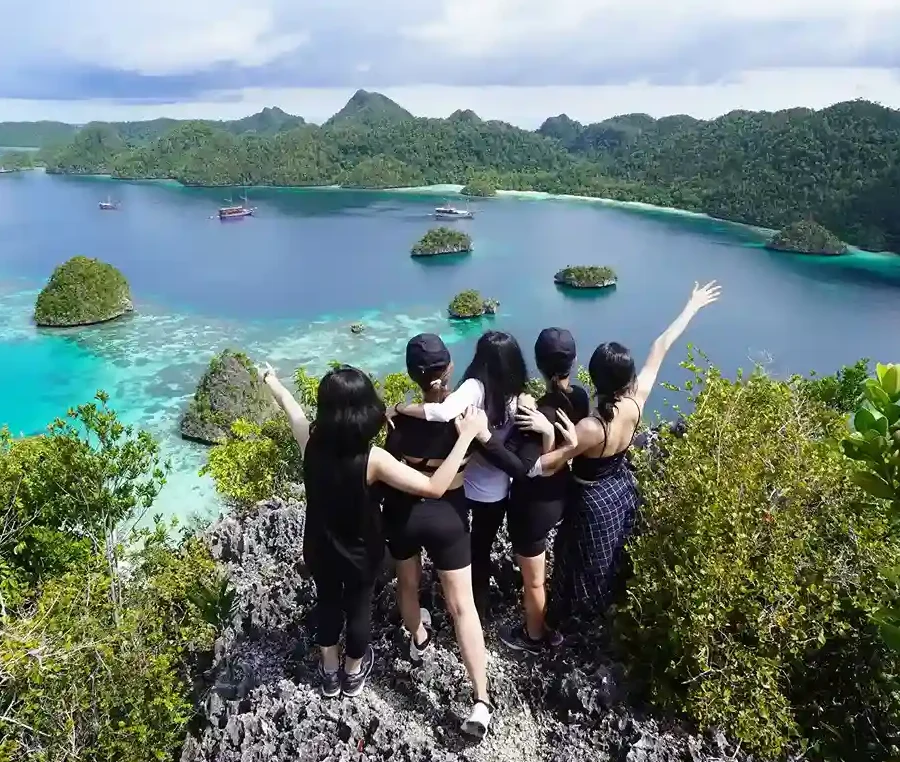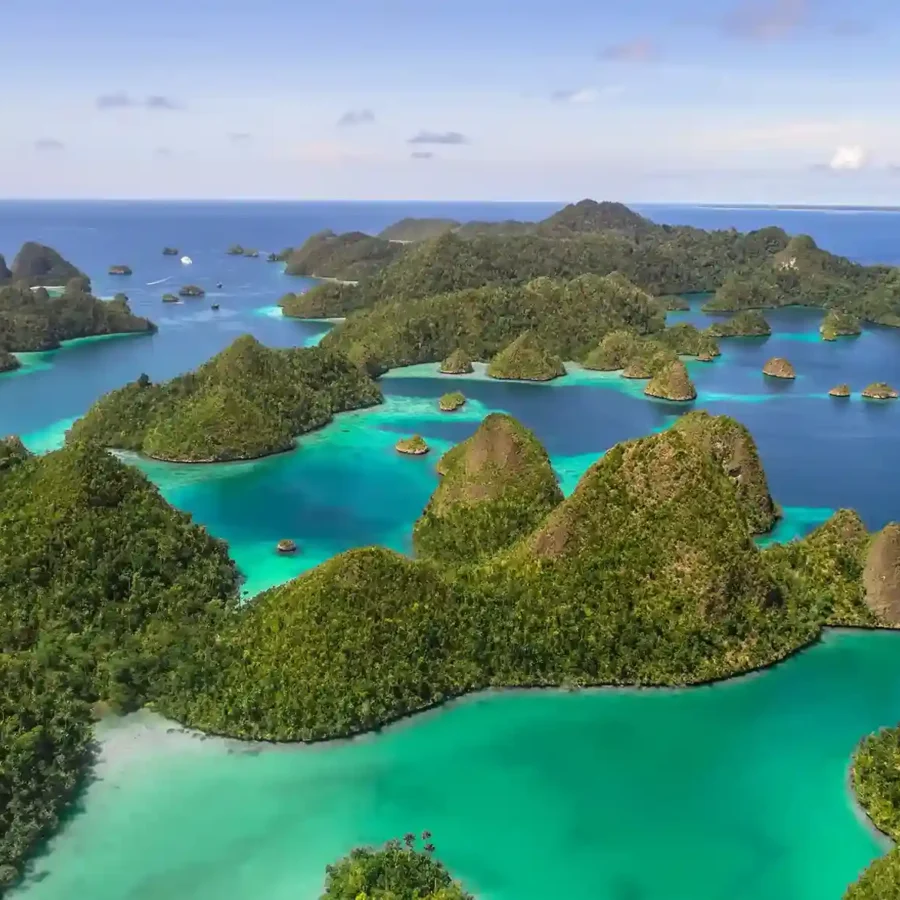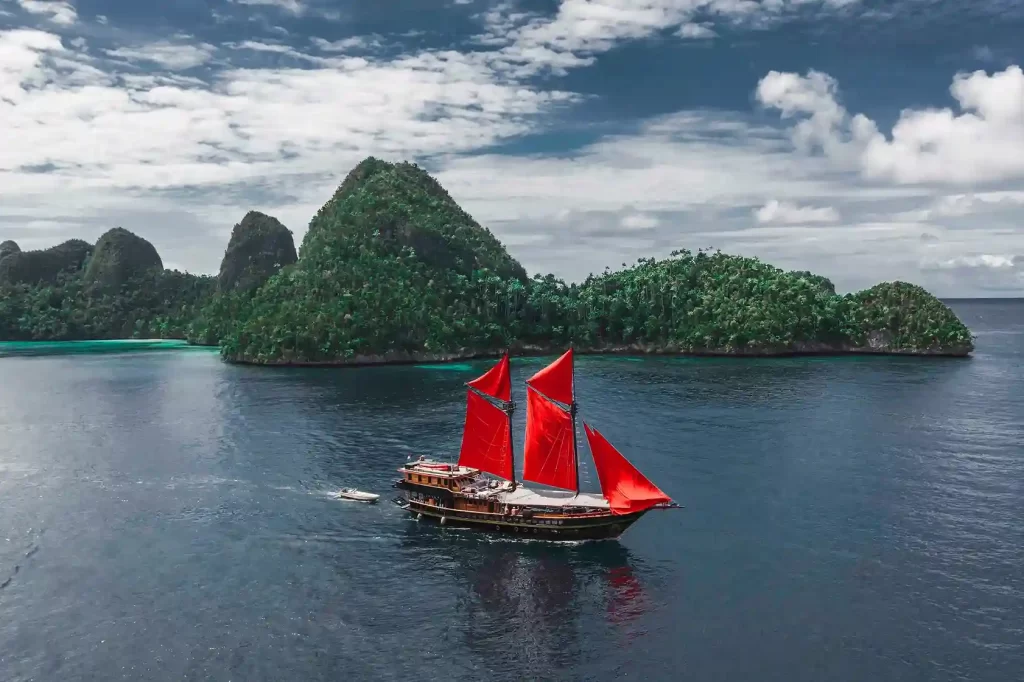Have you ever come across some pretty wild stories about Komodo dragons? For instance, people say they can breathe fire like mythical dragons or that they’ll only eat living prey. Well, these giant lizards from Indonesia do have a cool, almost legendary vibe, but there are also scientific facts that make us appreciate them even more.
If you’re thinking of visiting Komodo National Park, Pulau Rinca, Pulau Padar, or any of the other islands where Komodo dragons roam free, it’s super important to know which rumors are legit and which are just tall tales. Let’s bust some of those misconceptions and also check out some real, mind-blowing facts about these magnificent creatures.
Table of Contents
Komodo Myths
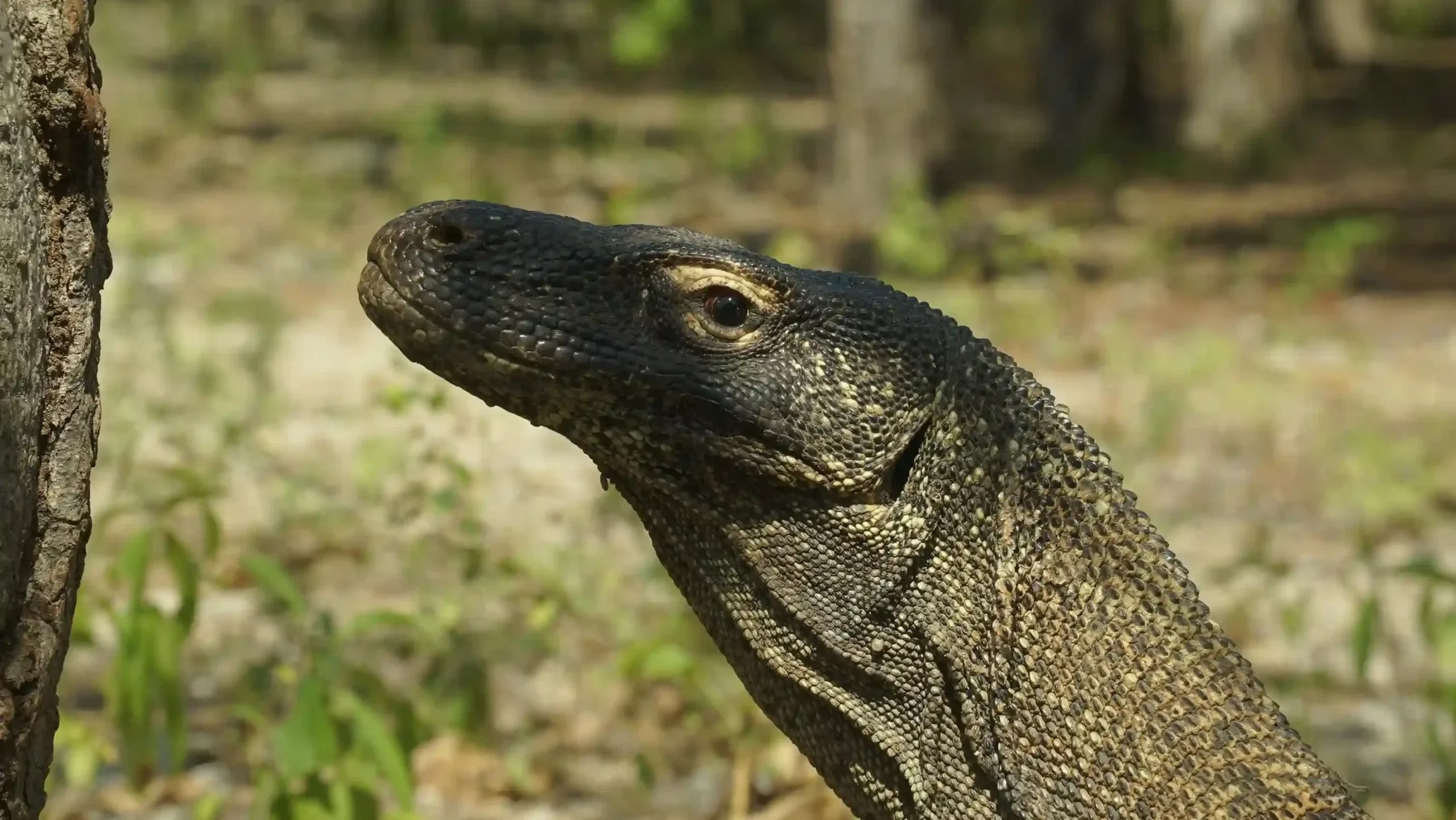
Close Up Komodo | IndonesiaJuara Trip
Before we jump into the real facts, let’s clear up a few myths that are floating around. Some of these might sound awesome, but they’re unfortunately not true. In fact, they can make people misunderstand or fear Komodo dragons too much.
1. A Dragon That Breathes Fire
Besides being called “Komodo,” this giant lizard is often referred to internationally as the “Komodo dragon” or “dragon,” which naturally brings to mind the mythical, fire-breathing creatures we see in fantasy stories. With a robust body, dark scaly skin, and piercing eyes, the Komodo does look pretty mythical.
But the idea that they can spitfire is totally off the mark. This misconception might come from their prehistoric appearance and the habit of flicking out their forked tongues. In reality, they’re flesh-and-blood reptiles living right here in the modern world, with zero ability to blow flames or smoke.
So yes, even though they’re called “dragons,” don’t go expecting a blazing inferno when you see them. More often than not, you’ll catch them sunbathing lazily while keeping an eye on visitors from a distance. But don’t let that fool you—Komodos are still fierce predators, so it’s best to keep your guard up around them.
2. Komodos Only Eat Live Prey
You might have heard people say these fierce predators only go after animals that are alive and kicking. True, Komodo dragons are skilled hunters in the wild. They can take down deer, wild boars, or even water buffalo, thanks to a venomous bite that weakens their targets. Once the venom does its job, the prey gets weaker and eventually collapses.
However, it’s not true that they exclusively feed on living prey. The Komodo dragon’s diet includes both carrion and live prey. Their diet includes a significant amount of carrion, and their forked tongues (super sensitive!) can pick up the scent of dead animals from miles away. Young Komodo dragons primarily consume smaller animals, transitioning to larger prey such as rodents and deer as they mature. The creepy part? They aren’t above digging up graves to scavenge for corpses.
Locals around Komodo Island and neighboring islands have a tradition of piling heavy stones on graves to keep Komodos from digging them up. So, if you hear stories about how the locals carefully bury their dead, you’ll know it’s because of these giant lizards. Spooky, right?
3. Komodos Can’t Run Fast Because They’re Huge
Seeing a Komodo dragon basking under the sun might give the impression that it’s slow and sluggish. They often look chill, sitting in one spot for quite a while. But don’t be fooled. These lizards can turn into sprinters in a heartbeat!
In reality, a Komodo can run at speeds of up to 20 km/h (around 12 mph) for short bursts, especially when hunting or feeling threatened. Their bulky bodies hide strong muscles that allow them to accelerate quickly. If you’re trekking on Komodo Island, always stay close to your guide and follow any safety instructions. Don’t get tempted to approach them too closely or, worse, try to touch them—because if they sense danger, you might not be able to run away in time!
Read more: Are Komodo Dragons Venomous? Discover the Truth Behind Their Bite!
Komodo Dragons Facts
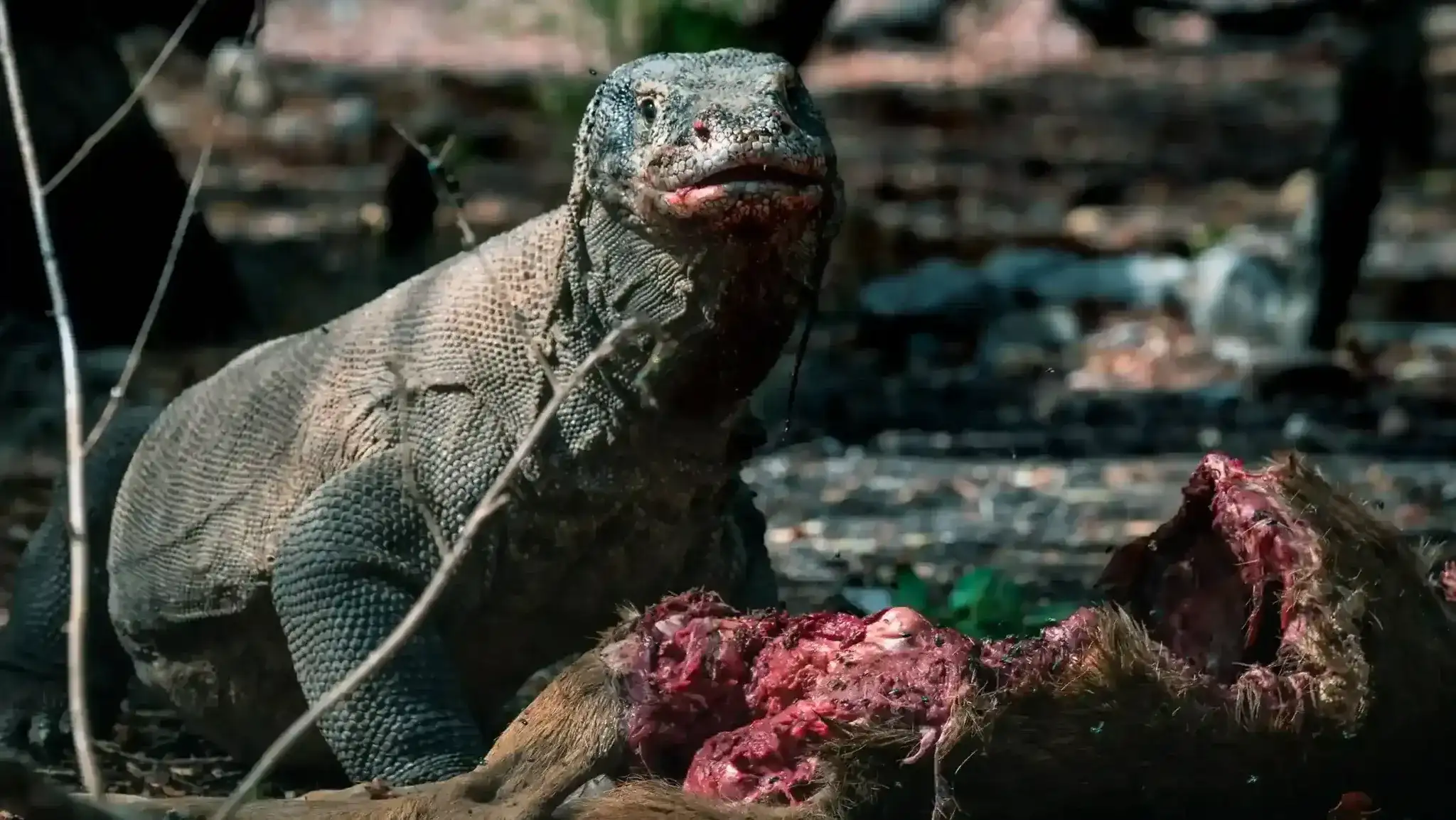
Komodo dragon on Komodo Island | IndonesiaJuara Trip
Now that we’ve debunked some of the myths, let’s dive into the real facts about these creatures. Get ready to be amazed because the Komodo dragon has a bunch of unique traits that fascinate scientists, tourists, and even the locals who live around them.
Komodo Dragon’s Have a Venomous Bite
The idea that Komodo dragons breathe fire might be nonsense, but their bite is no joke. Indeed, these giant lizards have specialized venom glands. The toxins can drop blood pressure, cause massive blood loss, and incapacitate prey pretty fast.
There used to be a popular theory that their saliva was loaded with lethal bacteria. Newer research, however, indicates that Komodos actually have dedicated venom glands, and while their saliva may contain bacteria, it’s really the venom that does most of the damage. Komodo dragon saliva has been found to contain potentially harmful bacteria that aid in subduing prey. Komodo dragon bites are particularly interesting because, despite the relative weakness of their bite force, their serrated teeth can inflict deep wounds. The venom then exacerbates the damage, causing rapid blood loss and weakness, making it nearly impossible for prey to escape.
For humans, a Komodo dragon bite is extremely dangerous. Don’t be careless around them—even if they look laid-back and lazy. Beneath that calm exterior lies a serious predator with a potent secret weapon in its jaws.
Komodos Are Cannibalistic Towards Young Komodo Dragons
Ever heard that Komodo dragons sometimes eat their own? That’s actually true. Adult Komodos have been known to feed on smaller or younger Komodos. This is why young Komodos typically hide up in trees to steer clear of bigger “siblings.”
Some baby Komodos even smear themselves with dung so their scent goes unnoticed by adults. Gross, but it works—Komodos have an incredible sense of smell, so masking their odor can be a lifesaver. Otherwise, they could end up as a quick snack. Creepy, right?
This cannibalistic habit helps adult dragons reduce competition in the wild. By eliminating smaller Komodos, they boost their own chances of survival. It might sound brutal, but that’s how nature works, especially in challenging environments where food might be scarce.
3. Komodos Are Great Swimmers
A common misconception is that Komodos stick to land and move slowly. But as we’ve already covered, they can run at up to 20 km/h. On top of that, these giants are also strong swimmers. They can swim between islands in search of food—if prey is scarce on one island, they’ll hop in the water and head to the next.
Thanks to their muscular bodies and sturdy tails, Komodos can push through the water with stable strokes. They’re not as swift as sharks, of course, but this swimming prowess makes them formidable predators both on land and at sea. If you’re island-hopping around Komodo National Park, it’s pretty cool (and slightly intimidating) to think these massive lizards can also navigate the ocean!
Read more: Seeing Komodo Dragons on Komodo Island or Rinca Island: Which One is Better?
Tips for Visiting Komodo National Park

Keen to see these unique animals in their natural habitat? You’re not alone. Komodo National Park is a favorite among local and international travelers. People come not only to see Komodo dragons but also to soak up the pristine scenery—like the pink beaches, rolling savannah hills, and jaw-dropping underwater spots. Remember, Komodo dragons are an endangered species, and your visit helps support conservation efforts to protect these unique reptiles. Before you pack your bags and set out, here are some tips to ensure a safe and enjoyable trip:
- Hire an Official Guide
Never explore Komodo National Park on your own without an official park ranger. A skilled guide knows the safest trekking paths and how close you can get to the dragons. It’s worth paying extra for peace of mind. - Keep a Safe Distance from Komodos
Rangers usually recommend staying at least 5–10 meters (around 16–33 feet) away, but if you can go farther, do it. Komodos can suddenly charge if they feel threatened or hungry. Remember, they can run fast, so never underestimate the gap between you and them. - No Feeding or Harassing the Dragons
You might be tempted to get a closer look or provoke a reaction. But feeding or disturbing these wild animals is a big no-no. It’s dangerous and can also mess with their natural behavior and the local ecosystem. - Avoid Visiting During Menstruation
Women are often advised not to visit while on their period because Komodos have an extremely keen sense of smell, especially for blood, which may trigger aggression. If you can’t reschedule, let your guide know so you can be given extra caution and care. - Wear Comfortable Clothing and Footwear
The terrain in Komodo National Park varies from rocky paths to rolling savannah. Choose breathable clothes and sturdy shoes. A hat and sunscreen are also essential because it can get very hot. - Stay Hydrated
The islands around Komodo can be hot and dry. You’ll likely be hiking under the sun, so always bring enough drinking water to avoid dehydration. - Respect the Rules and Environment
Don’t litter, don’t damage the habitat, and follow all the rules set by the park authorities. These guidelines protect both you and the delicate ecosystem. - Be Physically and Mentally Prepared
Trekking on Komodo or nearby islands can be tiring—some routes are steep going up or down. Make sure you’re in decent shape so you can enjoy the trip without issues. - Plan Your Timing
The dry season (April–December) is usually the best time to visit. Rainfall is minimal, and the landscapes are typically at their prettiest. You can also catch amazing sunrises or sunsets in spots like Pulau Padar, known for its epic views. - Use a Trusted Tour Operator
If you’d rather not deal with all the logistics, opt for an official tour service that includes a licensed guide, permits, transportation, and lodging. Go with experienced operators so your trip will be hassle-free and fun.
By following these tips, you’ll not only stay safe but also get the most out of your Komodo adventure. After all, how often do you get to see “dragons” in the wild?
Let’s Explore Komodo with IndonesiaJuara Trip!
Dreaming of a hassle-free, secure adventure in Komodo National Park? IndonesiaJuara Trip is here to guide you through the habitat of these awesome creatures. As a trusted tour operator with experienced guides, IndonesiaJuara Trip ensures every step you take is thrilling without compromising on safety.
On top of spotting the Komodo dragons, you can soak up the jaw-dropping scenery on Pulau Padar, dive or snorkel at top-class underwater spots, or simply unwind on the rare pink-sand beaches. Every itinerary is carefully planned so you’ll have an unforgettable journey.
Now’s the time to see the truth behind all those Komodo myths and facts for yourself! Don’t miss out on the chance to come face-to-face with Indonesia’s giant lizards. Go ahead—mark your calendar, get in shape, and make sure you’re up to speed on all the tips and tricks for a safe trip. And of course, don’t forget to book your Labuan Bajo tour with IndonesiaJuara Trip for an even more memorable and worry-free adventure in the “Land of Dragons!”
